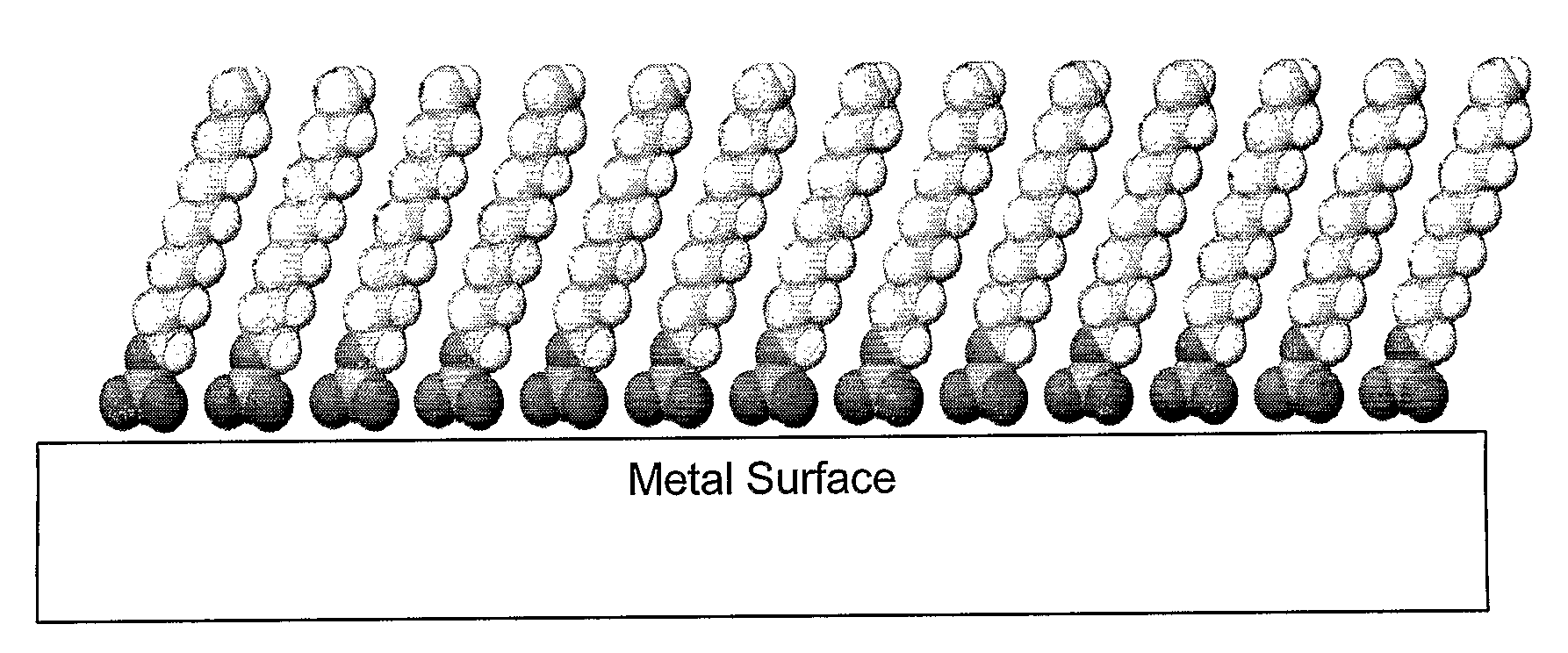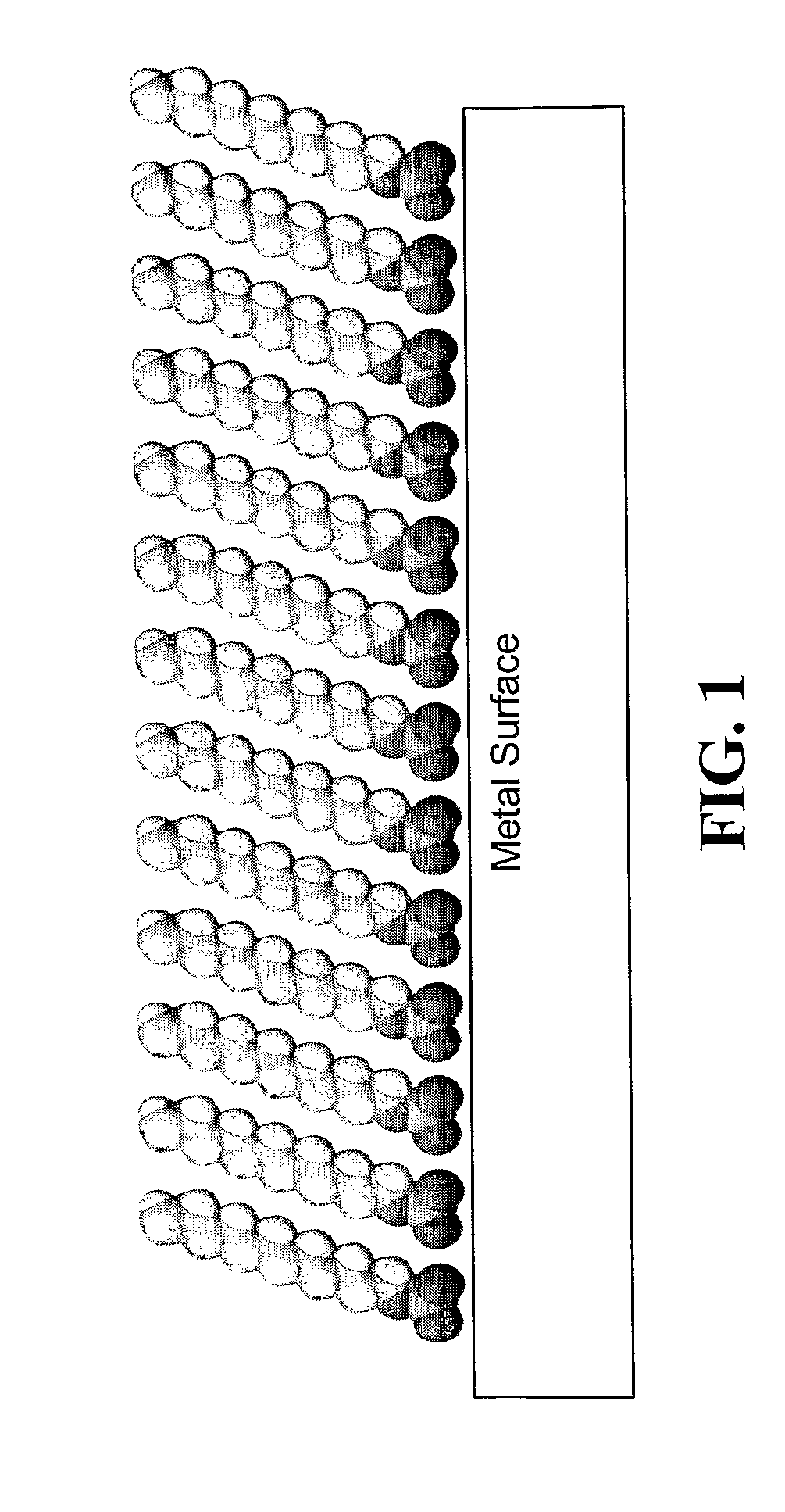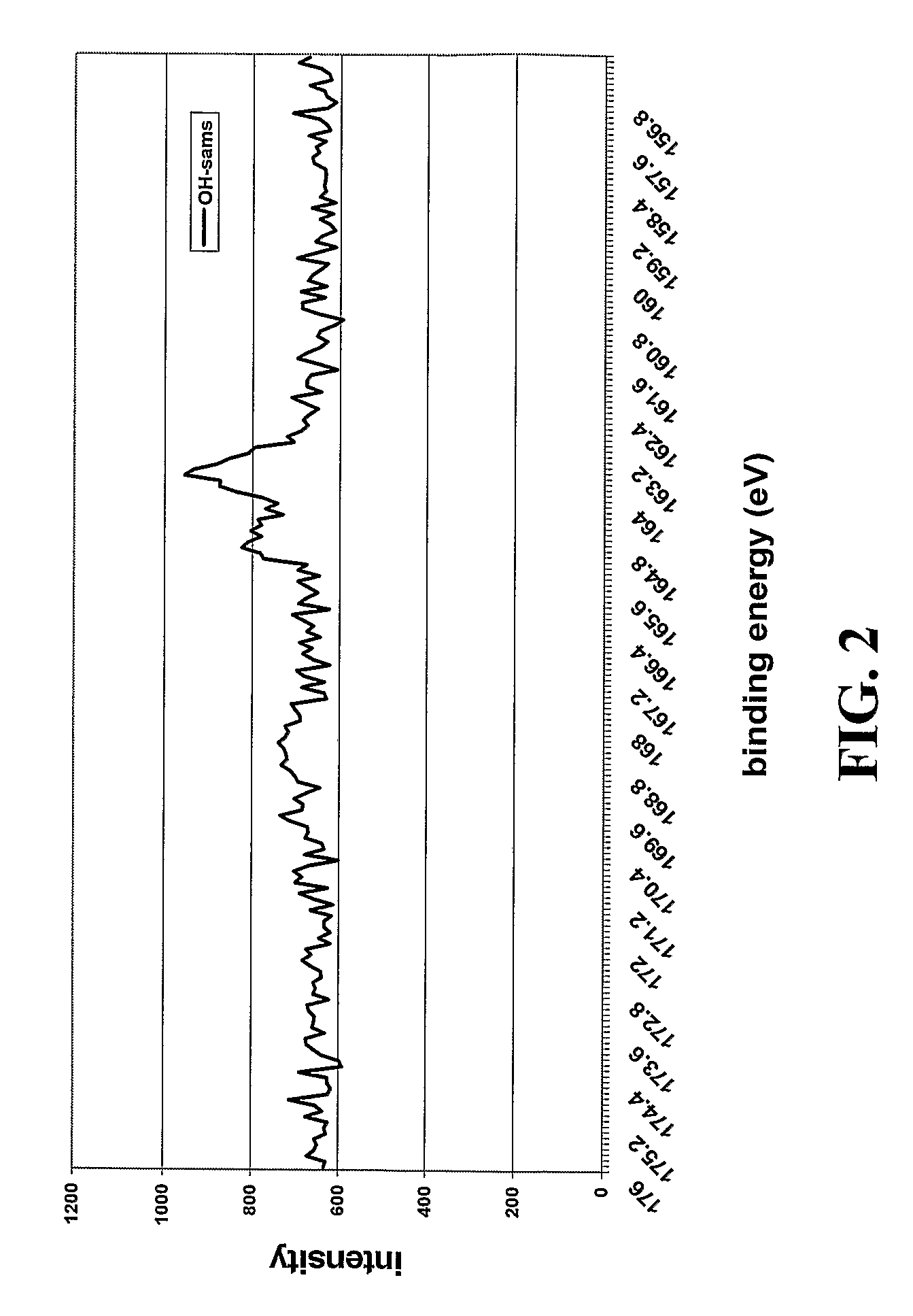Drug delivery from implants using self-assembled monolayers-therapeutic sams
- Summary
- Abstract
- Description
- Claims
- Application Information
AI Technical Summary
Benefits of technology
Problems solved by technology
Method used
Image
Examples
example 1
Formation of Self-Assembled Monolayers
[0217]Formation of SAMs on titanium and 316L stainless steel and confirmation thereof. Studies were conducted to investigate formation of SAMs on titanium and 316L stainless steel, with the possibility of using either material for potential medical devices such as stents.
[0218]Formation and confirmation of functional SAMs on 316L stainless steel (SS). 316L SS plates (20 mm×20 mm×2 mm) were obtained from ESPI Corp Inc, Ashland, Oreg. The samples were polished by using a Handimet Grinder polishing machine with 4 types of grit papers (240, 320, 400, and 600 grit papers). The roughness of the polished 316L SS plates was measured as 0.2±0.1 pm. The samples were cleaned chemically as follows: ultrasonicated in 70 percent ethanol for 10 minutes, followed by ultrasonic cleaning in acetone for 10 minutes and ultrasonication in 40 percent nitric acid for 10 minutes. This treatment is hereafter referred to as the “chemical treatment.” To improve the surfac...
example 2
Development of Synthetic Methodologies for Coupling Therapeutic Agents to Metal Surfaces Via SAMs
[0223]Chemical synthetic methodologies for coupling therapeutic agents to the metal surface can follow two strategies (a) chemical modification and attachment of therapeutic agent after formation of SAMs (b) attachment of therapeutic agent-linker prior to assembly of SAM.
[0224]Biocatalysis, which involves the use of enzymes, microbes, and higher organisms to carry out chemical reactions, may serve as an alternate route for surface modification of SAMs. Biocatalysis is well established in the production of pharmaceuticals, food, agrochemicals, and fine chemicals. Use of enzymes in organic synthesis (Roberts, 2001) and polymer science (Gross et al., 2001) has been discussed elsewhere within comprehensive reviews. Use of enzymes for surface modification of SAMs on a metal surface offers distinct advantages: (1) development of methodologies of attachment of those therapeutic moieties on meta...
example 3
Surface Modification of Function Self-Assembled Monolayers (SAMs) on 316L Stainless Steel Via Lipase Catalysis
Materials
[0237]316L SS Plates were obtained from ESPI Corp. Inc, Ashland, Oreg. 16-mercaptohexadecanoic acid, 11-mercapto-1-undecanol and Novozyme-435 were purchased from Aldrich Chemical Co. and used as received. Novozyme-435 consists of Candida Antartica Lipase B (CALB) physically adsorbed within the macroporous resin Lewatit VPOC 1600 (supplied by Bayer). Lewatit consists of poly(methylmethacrylate-co-butylmethacrylate), has a protein content of 0.1 w / w, surface area of 110-150 m2g−1, and average pore diameter of 140-170 Å (Mahapatro et al., 2004). Organic solvents were all analytical grades and purchased from Aldrich Chemical Co.
[0238]Contact Angle Measurements. Static contact angles were recorded using a VCA Optima S, surface analysis system. Droplet profiles were captured using a video and transferred to a computer for angle measurement. Contact...
PUM
| Property | Measurement | Unit |
|---|---|---|
| Volume | aaaaa | aaaaa |
| Contact angle | aaaaa | aaaaa |
| Contact angle | aaaaa | aaaaa |
Abstract
Description
Claims
Application Information
 Login to View More
Login to View More - Generate Ideas
- Intellectual Property
- Life Sciences
- Materials
- Tech Scout
- Unparalleled Data Quality
- Higher Quality Content
- 60% Fewer Hallucinations
Browse by: Latest US Patents, China's latest patents, Technical Efficacy Thesaurus, Application Domain, Technology Topic, Popular Technical Reports.
© 2025 PatSnap. All rights reserved.Legal|Privacy policy|Modern Slavery Act Transparency Statement|Sitemap|About US| Contact US: help@patsnap.com



